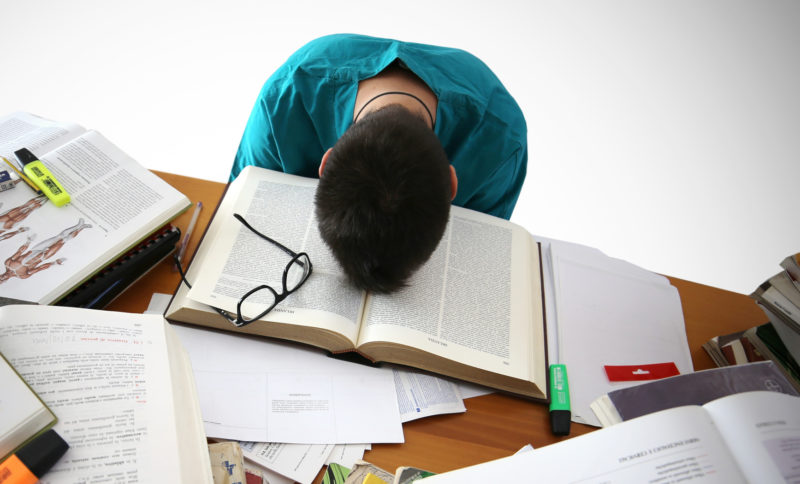
The change Chris Boitz saw in his students was gradual but unmistakable.
“Over the course of a few years, everything was different—their expressions, their demeanor, their moods,” he recalls. “There was a loss of focus. Many of them looked pretty desperate, actually.”
Boitz blames the “fear factor.” Students were afraid they weren’t taking enough Advanced Placement (AP) courses, that they weren’t getting the best grades, that they wouldn’t get into the best colleges, and that they weren’t pleasing their parents. The result: a stress level that shouldn’t be felt by an adult, let alone a 16- or 17-year-old high school student.
Boitz is a music teacher at Saratoga High, a high-achieving school in California where students are under great pressure to perform well. But schools that don’t share Saratoga’s high-performing percentile are not immune to high-stress academic environments.
A 2014 study by the American Psychological Association found that U.S. teens are even more stressed out than adults. Thirty percent of teens reported feeling sad or depressed because of stress, and 31% felt overwhelmed. Another 36% said that stress made them tired and 23% said it made them skip meals.
Awareness of student stress, says Denise Pope of Stanford University, has moved to the forefront. Pope is co-founder of the Challenge Success project, which provides school districts with strategies to promote student wellness, and co-author of
“Overloaded and Underprepared: Strategies for Stronger Schools and Healthy, Successful Kids.”
“People are finally seeing what negative stress does to the body, what that does to the psyche, and what it does to school engagement,” explains Pope. “Schools and communities know stress is a problem and they want solutions.”
School as a Pressure Cooker
There’s nothing necessarily wrong with a little stress. That is, the kind of nervous energy or “butterflies” that can sharpen focus and increase performance during, say, a big test or a class presentation. But many students, educators and parents will tell you it’s different now: The strain has grown to crisis levels in many schools.
“The entire education system has created a pressure cooker for students and staff,” Pope explains. “Twenty years ago, when you asked teenagers about what stressed them out, you would typically first hear things like ‘my parents’ divorce,’ or ‘my Dad’s an alcoholic,’ or ‘I don’t fit in socially.’ Nowadays, it’s always about school.”
Pope points to homework overload and early school start times as two long-standing school policies that deserve closer scrutiny.
As long as it is not assigned merely as a routine practice, many experts insist homework provides tangible academic benefits. But too much of it can heighten student stress, lead to sleep deprivation and generally less time for family, friends, and activities.
A growing number of researchers also believe that the average school start time of 8:03 a.m. is too early. In 2014, the American Academy of Pediatrics recommended middle and high schools delay the start of class to 8:30 a.m. or later, so as to align school schedules to the biological sleep rhythms of adolescents. This change, Pope says, “can make a huge difference.”
Researchers at the University of Minnesota recently examined data from more than 9,000 students attending 8 high schools in 3 states. They found that attendance and academic performance in math, English, science, and social studies improved at schools with later start times, while tardiness, substance abuse, and symptoms of depression declined. At one participating school that changed the start time from 7:20 a.m. to 8:30 a.m., school counselors and nurses reported fewer students seeking help for emotional problems and physical complaints.
Comments
Powered by Facebook Comments



